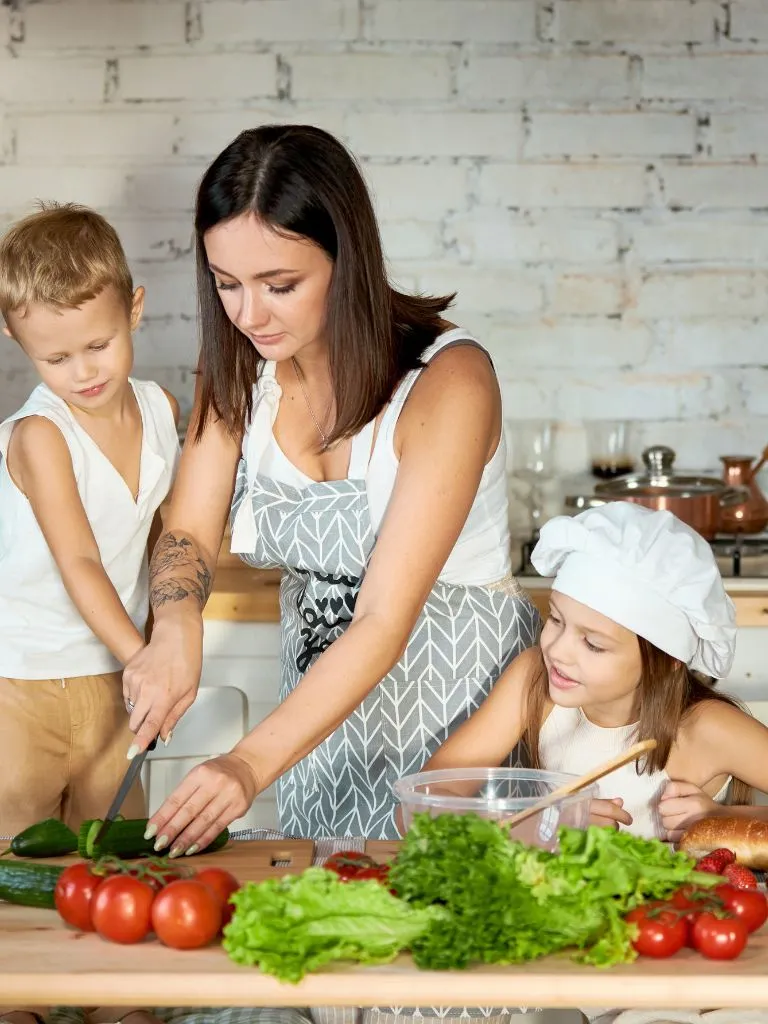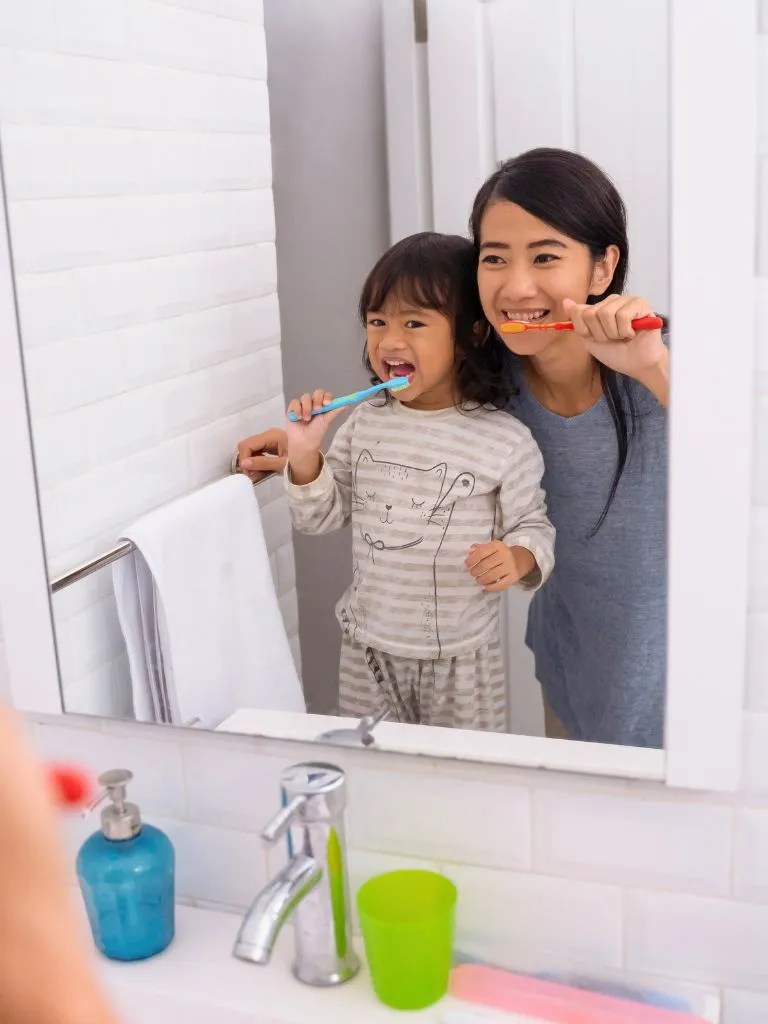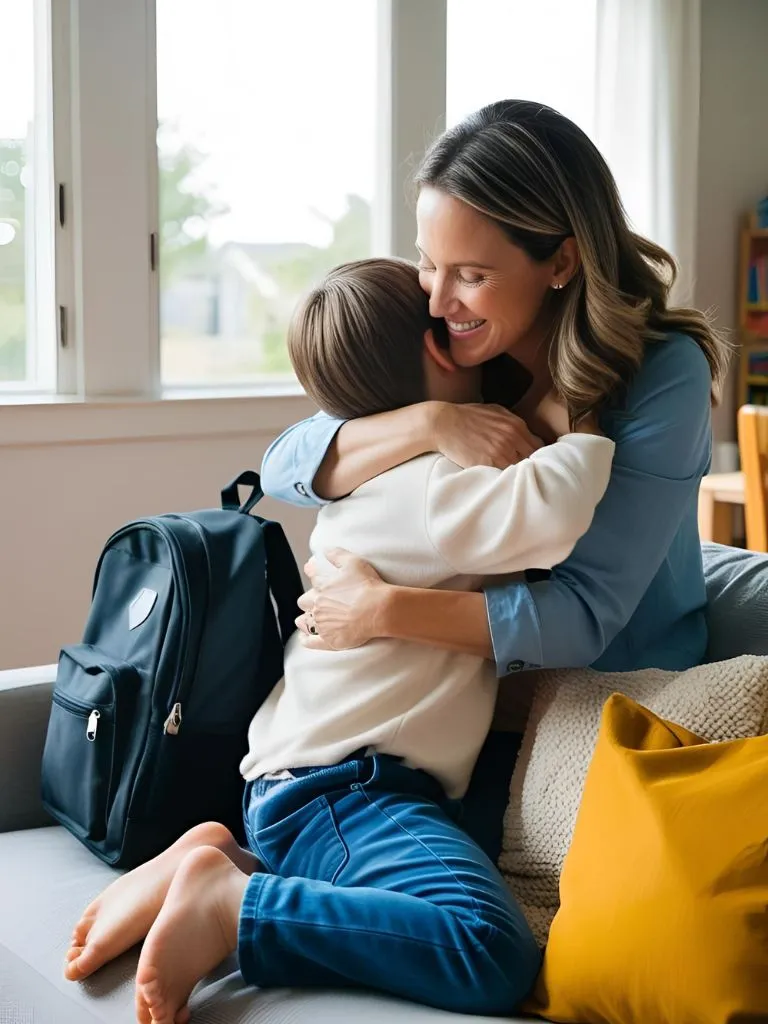Simple shifts that bring more peace, connection, and cooperation into your everyday.
The Truth About “Losing It” Before 9 AM
Let me tell you something I wish someone told me earlier — yelling doesn’t mean you’re a bad mom.
It just means you’re human.
There were mornings in our house when I would lock myself in the bathroom just to breathe. Three kids, spilled cereal, forgotten library books, a toddler refusing pants — and there I was, holding back tears, wondering why this felt so hard.
And then one day, something changed.
Not my kids (they’re still beautifully wild), but me — the way I chose to show up. That’s when I began building a positive parenting plan. Not some perfect Pinterest schedule, but a set of real, flexible tools I could fall back on when life felt messy.
And mama, it made all the difference.
What Is Positive Parenting, Really?
Forget the picture-perfect definitions. Positive parenting is about:
- Leading with love instead of fear
- Focusing on connection over control
- Teaching rather than punishing
- Seeing behavior as communication, not defiance
It’s not permissive. It’s not strict. It’s that sweet middle ground — firm, but kind.
1. Start with One Daily Connection Point
When my oldest started pushing every limit imaginable, I realized what he needed most wasn’t stricter rules — it was me. Not distracted, multi-tasking me, but present, in-the-moment mom.
So, I began scheduling one simple connection point each day with each child.
Sometimes it was five minutes of silly play. Sometimes it was just snuggling while watching birds outside. But that small investment paid off huge in cooperation later.
Try this:
Pick one time of day — maybe after breakfast or right before dinner — and let everything else wait. Give your full presence, even just for 10 minutes.
2. Shift From Commands to Choices
Let’s be honest: “Put your shoes on now!” doesn’t exactly bring out the best in toddlers.
What works better? Giving two choices.
- “Do you want to wear your blue sneakers or your sparkly ones?”
- “Would you like to brush your teeth first, or put on PJs?”
Choices give your child a sense of power and control — in the best way. It reduces resistance and invites cooperation.
It was a total game-changer in our home, especially for my strong-willed middle child.
3. Use Natural Consequences (Not Shame or Punishment)
Discipline doesn’t have to involve yelling, timeouts, or threats.
In fact, some of the best learning happens through natural consequences:
- If toys aren’t picked up, they go in a “rest bin” for a day.
- If you forget your coat, you’ll feel cold and remember next time.
- If you spill, you help clean up — not as punishment, but as responsibility.
When consequences flow from the behavior naturally, they stick. Plus, it keeps us from becoming the “mean mommy” — we’re just the calm guide through real-life learning.
4. Stay Consistent (Even When It’s Hard)
Consistency is everything.
Kids feel safest when they know what to expect. So even when you’re tired, overwhelmed, or running late, try to hold the boundary you set.
One thing that helped me? Scripting my responses ahead of time.
Instead of yelling, I’d calmly say:
- “We clean up before bedtime. I’ll help you for five minutes, then it’s your turn.”
- “I see you’re mad. It’s okay to be upset. It’s not okay to hit.”
- “You can be angry, but you may not throw toys.”
Planning those phrases gave me the words when my emotions wanted to shout.
5. Model What You Want to See
Want kids to be kind, respectful, and emotionally regulated?
Start with you. (Ugh, I know.)
But it’s true — our kids don’t always listen to what we say. They watch what we do.
So when I mess up (which I do, a lot), I model repair:
- “I’m sorry for yelling. I felt overwhelmed, and that wasn’t okay.”
- “I’m going to take a break and breathe — you can join me if you want.”
- “Let’s try again. I love you, even when I’m frustrated.”
The more I owned my mistakes and showed emotional responsibility, the more my kids did too.
6. Make Space for Feelings (Even Loud Ones)
Positive parenting isn’t about keeping everyone happy 24/7. It’s about creating safety — especially during big emotions.
Tantrums? Not a problem to fix. They’re a release — your child’s way of saying, “I need help with this hard thing.”
What helped me most was changing my internal script from:
“Ugh, here we go again…”
to
“This is hard for her. I’m her safe place.”
Instead of shutting feelings down, I began validating:
- “It’s okay to be sad. I’m here.”
- “You really didn’t want that to happen. I get it.”
- “You’re mad because it feels unfair. Let’s breathe together.”
It was uncomfortable at first, but so worth it. My kids started moving through emotions faster and with more trust.
7. Fill Their Cups Before They’re Empty
Kids don’t act out for fun. They act out when their emotional tanks are running low.
So now, I look for early signs:
- Extra clinginess
- Whiny tone
- Quick frustration
Those are my cues to pause and reconnect — not wait for the meltdown.
Even just eye contact, a quick back rub, or a joke can reset their mood before chaos hits.
8. Celebrate Effort More Than Outcomes
Instead of only praising “good behavior,” I focus on progress and effort:
- “You stayed calm even when it was hard. That’s amazing.”
- “You’re learning how to share, and that takes practice.”
- “I saw you take a deep breath when you felt upset. That’s a big deal.”
It builds resilience. Confidence. And lets your child know they’re loved for who they are, not just what they do.
Final Thoughts from One Mama to Another
Building a positive parenting plan doesn’t require perfection. Just presence, patience, and a whole lot of grace — for them and for you.
There are days I still lose my cool. Days the routines fly out the window. That’s real life.
But having this plan in place — these simple, heart-led strategies — gives me something to come back to again and again.
You’ve got this, mama. One gentle step at a time.
Let’s Keep the Conversation Going
What part of positive parenting feels hardest for you right now?
Drop it in the comments — or share this post with a fellow mama who could use some love and encouragement today. 💛
And don’t forget to save this pin so you can revisit it on the tough days.








